As HSJ celebrates the top trust chief executives in the NHS, our first roundtable on the subject asked what characteristics mark out these individuals, and how fixed or fluid these qualities will be as the NHS landscape continues to change. Report by Alison Moore

HSJ is celebrating the role of great leaders in the NHS with a series of roundtable events attended by some of the top 50 chief executives, as featured in our recent list.
The first of these looked at the qualities that distinguish successful leaders and whether these may change as the NHS enters an even more challenging phase. Future roundtables will look at the role of chief executives at a time of organisational and structural change, and how chief executives can drive forward quality in their trusts. The three events are jointly sponsored by Capsticks, NHS Employers and Penna.
Participants
- Emma Maier deputy editor, HSJ (chair)
- Karen Charman director of engagement, NHS Employers
- Mark Laffan head of healthcare practice, Penna
- Sharon Lamb partner, Capsticks
- Katrina Percy chief executive,Southern Health Foundation Trust
- Tim Smart chief executive, King’s College Hospital Foundation Trust
- Nick Carver chief executive, East and North Hertfordshire Trust
- Samantha Jones chief executive, West Hertfordshire Hospitals Trust
- Andrew Liles chief executive, Ashford and St Peter’s Hospitals Foundation Trust
HSJ deputy editor Emma Maier stressed the roundtable wanted to tease out not just what good leadership looks like now but also look into the future: where would the leaders come from and what can be done to support them?
“We are facing a time of increasing financial pressure and the 24/7 responsive internet world makes quite a difference to expectations that patients and the public have of health services, and there are also demographic changes,” she said. “That has a knock-on impact on leaders in the NHS and the difference that good leaders can make.”
- Meet HSJ’s top chief executive for 2014
- Download the HSJ Top Chief Executives supplement
- Alastair McLellan: It is a tought time to be a trust chief executive
- Discuss the list on Twitter: #HSJtopchiefs
But what role do outstanding chief executives play in helping their organisations perform better? Mark Laffan, head of healthcare practice at Penna, said that some of the most effective leaders helped individuals within their organisations to see what their role and contribution was. “That is becoming increasingly challenging as the system becomes more fragmented,” he added.
Andrew Liles, chief executive at Ashford and St Peter’s Hospitals Foundation Trust, said: “I can see the need in organisations for stability and direction. How can leaders give direction so that individuals can get on with their job?”
Cutting complexities with confidence
Leaders needed the ability to cut through the complexities and turn that into confidence, he said.
Karen Charman, director of engagement at NHS Employers, highlighted the strengths in her own organisation such as influencing and persuading and a clear set of internal values together with a chief executive who gave people the confidence to be bold.
But different parts of the NHS may need different aspects of leadership. Katrina Percy highlighted the widely dispersed nature of the workforce in her organisation, Southern Health Foundation Trust - 9,000 people spread over 350 sites. “One of the big things for me is about creating local leaders,” she said. “I really invest in people development and at a time when money is short I put more money into that.
She was also keen to empower staff and to reduce unnecessary bureaucracy. “You don’t have to write a business case for everything: if you have a good idea then just get on with it.”
‘We did not get a hammering because we were proactive. We got it wrong… but it was okay to say we got it wrong’
“For me it is about setting the tone for the organisation and giving it pride,” said Samantha Jones, chief executive of West Hertfordshire Hospitals Trust. It was important for staff to feel they had the support of the chief executive, even when they got things wrong, she added.
Near neighbour Nick Carver - from East and North Hertfordshire Trust - added: “Really good leaders are able to negotiate, formulate, articulate and deliver strategies for success.”
Working in a multistakeholder environment meant that “political” skills were particularly important. “And while I am not arguing for permanence of position I think there is a need to be believable in the position,” he added.
Capsticks partner Sharon Lamb had a slightly different perspective: “It is difficult to define leadership and it changes from organisation to organisation. It is one of those things that we recognise when we see it and we really notice it when it is not there.”
And she warned that organisations were sometimes “in a state of fear and paralysis” where people were concerned about making the wrong decisions. “That is the biggest feature we see in an organisation that is not going to make it through.”
Show your pride
Tim Smart is overseeing a transformation as his trust - King’s College Hospital Foundation Trust - takes on the Princess Royal Hospital in Bromley and some other services, from the dissolution of South London Healthcare.
“For me, pride and confidence are really important… I think we owe it to everyone that we can portray the balance between the vision of sunny uplands and reality.
“It is about making sure that people feel confident in making choices. There are some things that we have to admit we can’t do and should not do.
“We need to promote innovation. And through innovation we need to promote income diversification. I don’t mean the privatisation of the national service but I do think there are sources of income we should attract that can help us.”
With this level of agreement among the panellists, Ms Maier asked whether challenging times affected this clarity of direction and made leaders more authoritarian in approach.
Ms Jones spoke of how her trust was at the start of a long journey and had been buffeted. “Leadership as a chief executive is protection against that buffeting and having the strength not just to follow your own path but to keep that clarity of purpose.”
‘I went through a phase thinking it was my job to protect the organisation and soak it all up… it did not do me any good’
Often the things that challenge an organisation come from outside, suggested Mr Liles. “I went through a phase thinking it was my job to protect the organisation and soak it all up… it did not do me any good,” he said.
Now he tries not to “transmit” the threats from outside on to staff but instead helps them to understand the environment the FT has to operate within.
Ms Percy has also been leading her organisation through troubled times - it had taken over a smaller provider and several sites had since had critical Care Quality Commission reports. Yet the board had been having very mature conversations and recognised the organisation faced a range of risks.
“The temptation in the chief executive role is to say that I have to fix that bit and all the attention goes there. In an organisation that is so diverse that is a big challenge,” she said.
Ms Charman pointed to the importance of language in conveying approach. “I have overheard conversations by directors which say we must engage with them and they need to know that we have engaged with them. If that does not sound authoritarian, I don’t know what does!”
Changing language around the strategy and narrative of the organisation cost nothing, she added.
But Ms Percy said it was important to skill up staff so they could bring about change: in the past she had used too much of a hands off approach but now ensured staff were given the skills they would need to do it themselves. “There is something fundamental about how we give staff not only the confidence but the skills to drive transformation,” she said.
Cardiac arrest
Mr Laffan acknowledged that sometimes there were circumstances when everyone in an organisation needed to align in a particular direction. “If the culture is right, can people willingly align themselves and see that as the direction they need to go in?”
Ms Jones described her own trust as having been “in cardiac arrest” last year in a position where “we did not have the time to take the staff with us in engagement terms”.
“Having the time and space to build that relationship is critical. In times of crisis you need these relationships.”
But Mr Smart said: “I think authoritarianism is completely wrong and completely unnecessary. In the centre of all of this in each of these organisations is a clinician and a patient. Ninety-nine-point-nine-nine per cent of these clinicians want to provide good care and our job is to enable them to do that.”
But is there a difference between inner and outer London, between district general hospitals and teaching hospitals, asked Ms James? “They are not all the same and I wonder whether the types of leadership are different.”
Mr Smart said that he had been surprised by the differences between King’s College Hospital and the recently acquired Princess Royal Hospital.
“What is the same is the pride that the nurses in particular have about the care they provide on a daily basis.”
‘I try to understand the relationship and motivation of people within my organisation’
But do we all have a “duty to progress”? Mr Smart suggested that talking about progress rather than change could be productive.
“I talk a lot about the language around change and try to change it to talking about striving for improvement,” said Ms Percy. But she added that when she left the acute sector and moved into community services, people joked that her career was over. “It has been absolutely enlightening for me. One of the things for the future is encouraging people to work from big teaching hospitals to community services.”
This could challenge the myths and silos which existed.
Ms Jones highlighted her experience of working both inside and outside the NHS. “I learnt more about the NHS outside it… I learnt anything is possible in the private sector, it just depends on how you do it.”
But Mr Smart - who worked in the private sector for many years - said: “We need to remind ourselves that everything is more important than what is done in the private sector.”
Mr Liles agreed. “The people who work in the NHS are remarkable. I try to understand the relationship and motivation of people within my organisation. Most of those relationships and motivations are within their teams and with individual patients.”
Understanding this could be incredibly powerful, he added.
So what will be the key skills and characteristics of NHS leaders in the future? Mr Smart said: “One of the core skills that we need in the chief executive arena and probably in the top teams is collaboration. I used to work in an organisation that was enormously competitive but we used to succeed by being collaborative.”
Mobile telephone demonstrated that fiercely competitive sectors could still collaborate to everyone’s benefit.
“We need to understand how to collaborate better across silos, across sectors and across health and social care. How do we collaborate and compete at the same time?”
Unleashing talent
Ms Jones spoke of the difficult situation her organisation had been in last year when it had problems with cancer processes. It was “very scary”, she said.
“We put ourselves out there, we said this is the problem, this is what we have done about it and unfortunately there was harm to patients.
“Without exception everyone was fantastic. My anxieties were wrong. We did not get a hammering because we were proactive about it. We got it wrong… but it was okay to say we got it wrong.”
Mr Liles has trained as a healthcare assistant over the last year to better understand how it felt for staff caring for patients on the wards. “I feel much more comfortable in my understanding of care and how bad care can be given and what we do about it.
‘We got it wrong… but it was okay to say we got it wrong’
He has also started to “step away” and deal with problems before they occur through collaboration and partnership. His trust is now pursuing a merger with neighbouring Royal Surrey County Hospital Foundation Trust. “I was really proud to build my organisation as a foundation trust. But I’m also really proud about dismantling it.”
Ms Maier questioned whether the need to find new sources of income could require new skills from leaders. Mr Laffan said that in the past trusts had tended to appoint commercial directors in an attempt to get an extra 5 per cent of income but now boards had to think about all their activities.
Ms Jones said that it was about unleashing the talent of the NHS’s staff and trying to avoid the “it’s all too difficult” attitude.
Ms Lamb added that it was important to find a space to do this, as well and Mr Carver stressed how difficult it was to do some of these things in struggling organisations which might not have a substantive director of nursing or chief executive.
Sink or swim
Mr Smart stressed he did not think there should be more people like him in the NHS. “The people working in the NHS are the most talented people in the country. We need to keep reminding ourselves of that.”
But non-executive directors could be useful in bringing a different, more commercial, perspective to these organisations.
Ms Percy said there was a need for balance between the NHS Leadership Academy and local development of leaders. Excellent though the academy was, it did not replace the need for local development. Her chief operating officer had been promoted from a consultant nurse role five years ago and was now about to leave for a chief executive’s job.
“She will be a really strong leader because of the investment we have made. One of the greatest jobs (of chief executives) is recruiting talented leaders,” she said.
‘One of the greatest jobs (of chief executives) is recruiting talented leaders’
Many big organisations have programmes which expose trainees to different areas, pointed out Mr Laffan. But in the NHS, the first time a chief executive gets to run “the whole of anything” may be when they take the job. Mr Smart pointed out that the NHS recruited people as generalists and then made them specialists.
So what could improve this environment for leaders or aspiring leaders?
Mr Liles said: “There is more than enough talent in the NHS to populate these top roles… I think we have talked down top roles in recent years. I think it is the best job I have ever done.”
But he added it was harder now for leaders starting their first chief executive job than in the days of strategic health authorities. There were fewer opportunities for chief executives to get together and people could be put in an organisation which was not straightforward and become inward looking and engrossed. Ms Lamb added: “It feels like the connections have been lost and not re-established.”
Ms Jones said: “When I was first at Epsom it was sink or swim. It was not an easy trust. Your first appointment is not to a stable organisation and there isn’t a safety net. It’s not easy to go yes I need help.”
Mr Carver agreed: “There is something around derisking the next big move.”
Karen Charman on the future of leadership
It’s great to be involved in celebrating the role of leaders in the NHS. At our first roundtable event in London I joined a small group of chief executives to explore how we can develop leaders now and in the future.
The role of the leader is always going to be challenging, no matter what size, type or geographical location of the organisation they are leading. They are always up against public scrutiny, new and advancing technologies, increasing demands and expectations and of course significant financial pressures.
Given the task they have in hand, how do we nurture leaders of the future to step up to the challenges the NHS presents?
Current leaders and leaders of the future need to have the ability to set the tone for the organisation and its strategic direction. They should demonstrate they are bold in their approach to the way they lead, so that others can learn from and have confidence in the decisions they make and direction they go in. They need to inspire others to join the group of future leaders who learn from their predecessors.
Strong leaders come with a clear sense of clarity and purpose and a sense of direction. They are able to cut through the complexities of organisations and in doing so reduce the bureaucracy that surrounds so many NHS processes and procedures.
“Clarity and direction” and “the complete stifling of creativity” are at either end of the spectrum in terms of the style with which leaders lead their organisations. This will impact on the performance and engagement of the workforce and the leader.
Presenting a range of acceptable behaviours, which are clearly linked to a strong set of values, that allow staff to challenge and support, is a way forward to a more harmonious approach and relationship between the leaders and the workforce.
The NHS is vast, with some organisations dispersed over hundreds of sites. Creating local leaders and investing in people development at this level is imperative - it demonstrates a real commitment to creating leaders of the future from homegrown talent.
Ultimately, leaders and in particular those of the future must be able to unleash the potential of the workforce and confidently strike a balance between getting closer and being able to step away and lead their organisation.
We have the skills in the NHS. Now is our chance to change the language and self-belief and inspire the leaders of the future.
Karen Charman is director of communications, engagement and business development at NHS Employers
Topics
- Acute care
- ASHFORD AND ST PETER'S HOSPITALS NHS FOUNDATION TRUST
- EAST AND NORTH HERTFORDSHIRE NHS TRUST
- KING'S COLLEGE HOSPITAL NHS FT
- Leadership
- NHS Employers
- NHS England (Commissioning Board)
- South
- SOUTHERN HEALTH NHS FOUNDATION TRUST
- Staff wellbeing
- Top Chief Executives
- West Hertfordshire Teaching Hospitals Trust
- Workforce





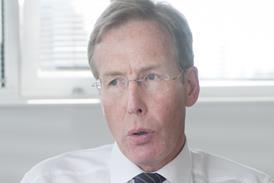












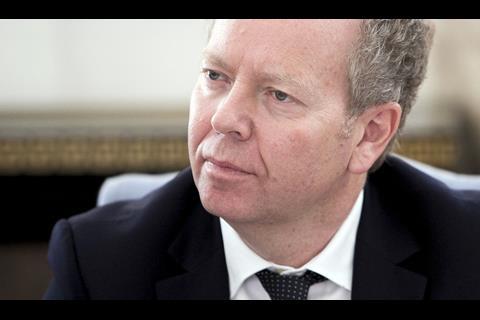




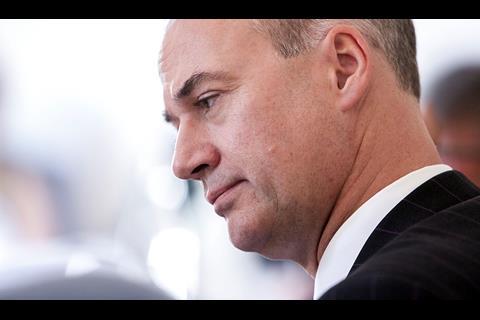
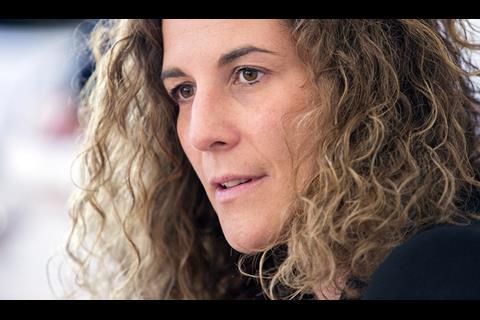

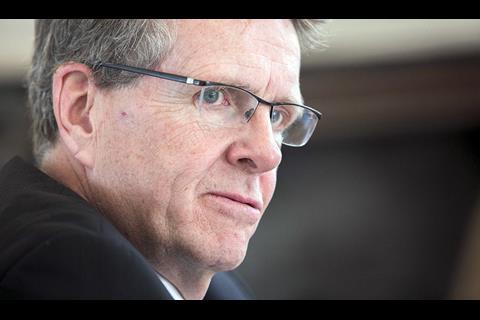






No comments yet